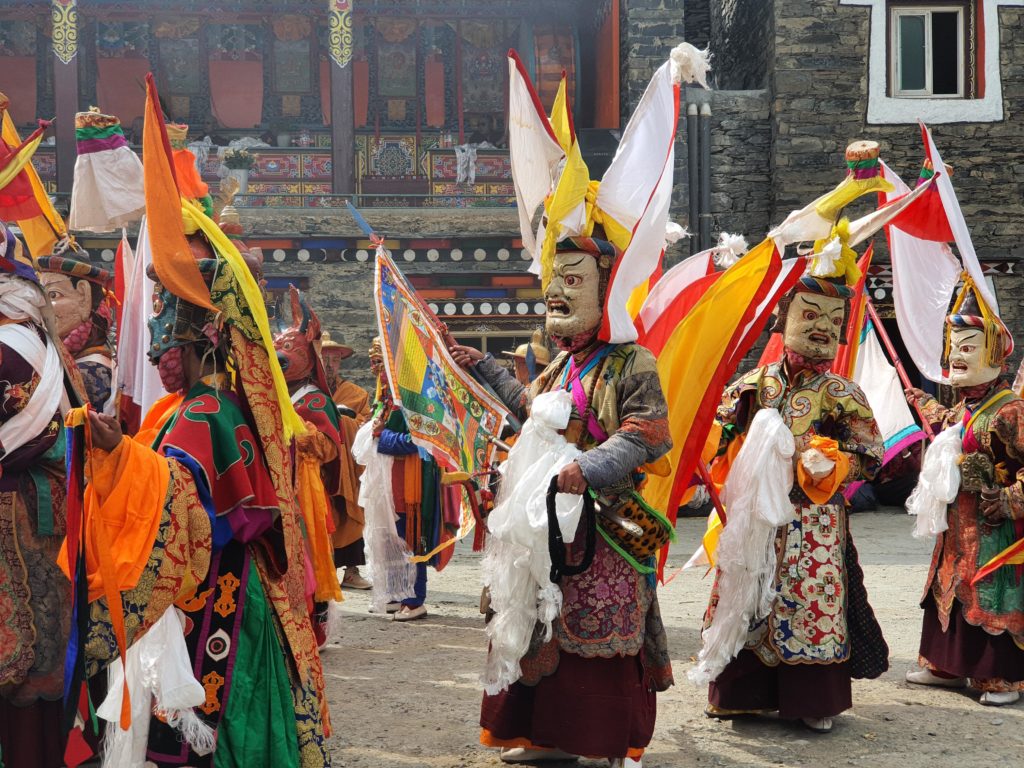
The longer we travel around China, the more we realize that we cannot make plans and expect to stick to them. Life is not about planning but more about accepting changes and being open to opportunities. We need goals but only to embrace them as a general guide. The best thing is to be prepared to a certain point and then be flexible and able to enjoy the process. Our main goal is to head towards Tibet and leave before winter when it is too cold for our furry children. Ever since we left Da Li, Yunnan (雲南大理) in late June, our route kept changing as we talked to experienced travellers we met on the road who suggested places we have not heard of or would not have considered if we just read about them from the internet.
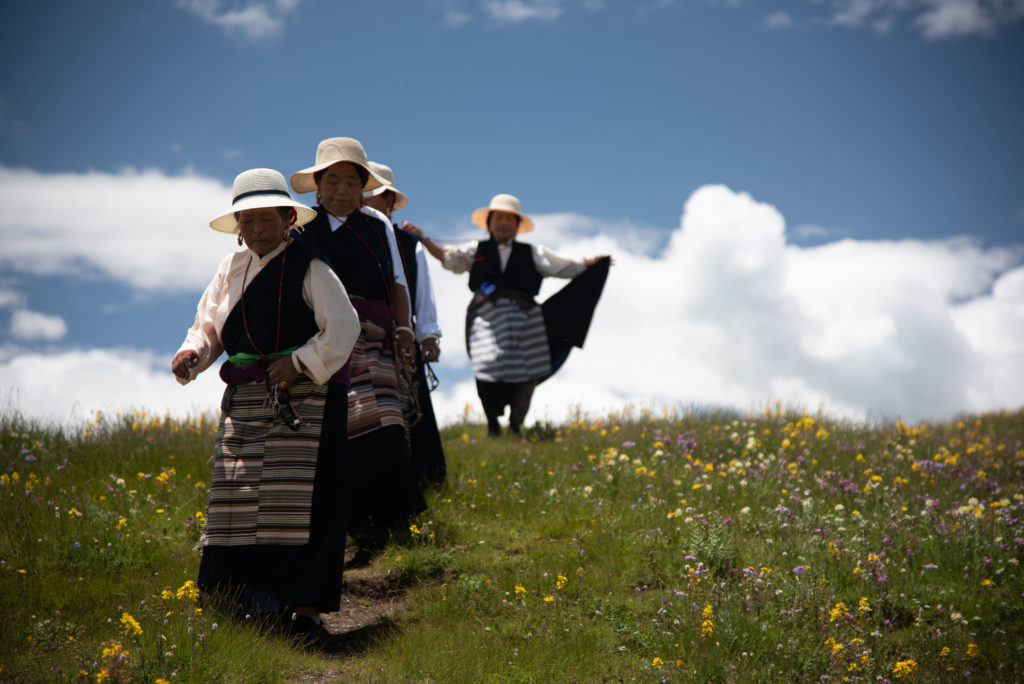
Originally we wanted to enter Tibet via Yunnan but we were advised by our Chengdu friend whom we met in Sha Xi (沙溪) (that’s another story that I will tell later) that the route is more technical and dangerous given the rainy season. Hence, we changed our route and crossed over to the south-western part of Sichuan (四川). Sichuan is a fascinating province as it is a cultural melting pot of both ethnic and Tibetan people due to its proximity to Tibet on the west and Yunnan on the south-west. It has 55 ethnic groups, one Tibetan and two ethnic autonomous prefectures.

One of the places our Chengdu friend specifically suggested was Ta Gong (塔公草原) in the Tibetan prefecture and he advised us to stay a few days to adjust to the high altitude (3720m) before continuing any further. We read up on the place and expected lots of grassland, Tibetan temples and small villages. But we didn’t realize that we would spent the most memorable four days there.
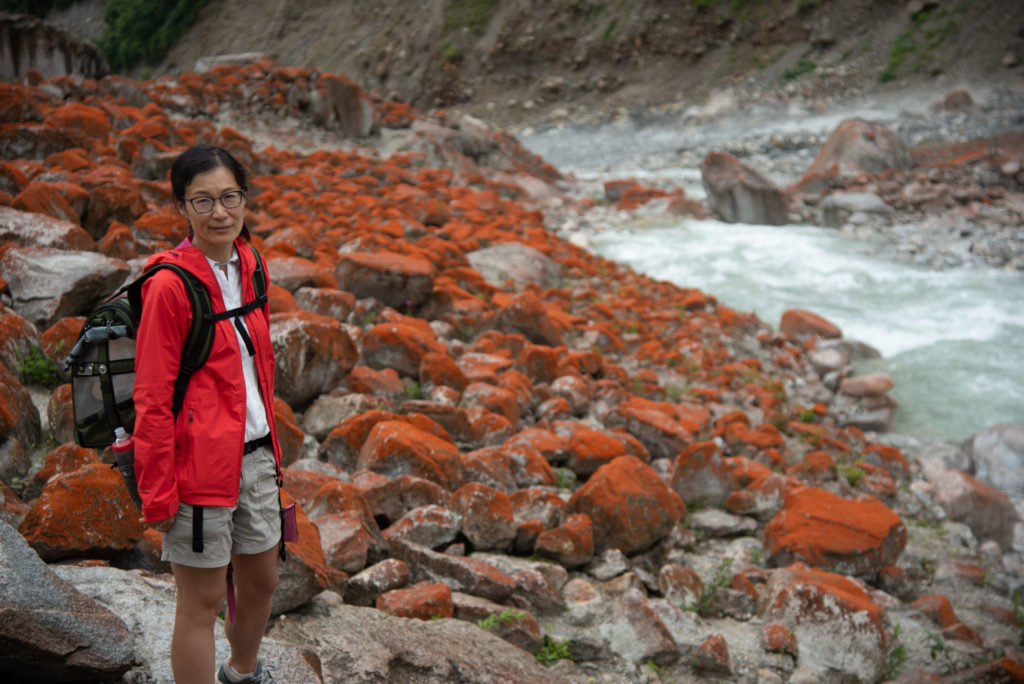
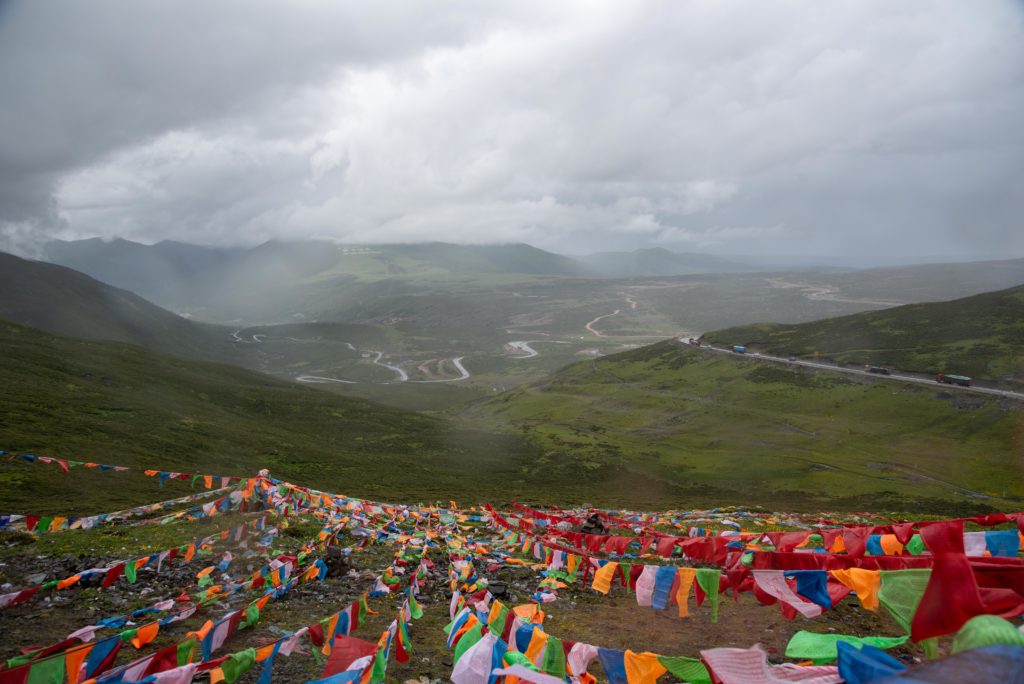
We were a little apprehensive about driving to Ta Gong as it was of the highest altitude (3720m) so far in our trip. We drove from Hai Luo Gou (海螺溝) climbed up and down three mountains along the way and we saw splendid ravines, waterfalls and meandering streams dotted by red rocks. The landscape and view en route was so spectacular that we stopped all the time to take photos. After about an hour’s driving, the scenery changed and we saw a shift from the ethnic looking villages which we saw in Yunnan to Tibetan style houses and the colourful prayer flags flowing all over the mountains. We had to drive carefully not only because of all the steep bends and slopes but more specifically to watch out for the goats, cows and the village dogs that of course always have the right of way.

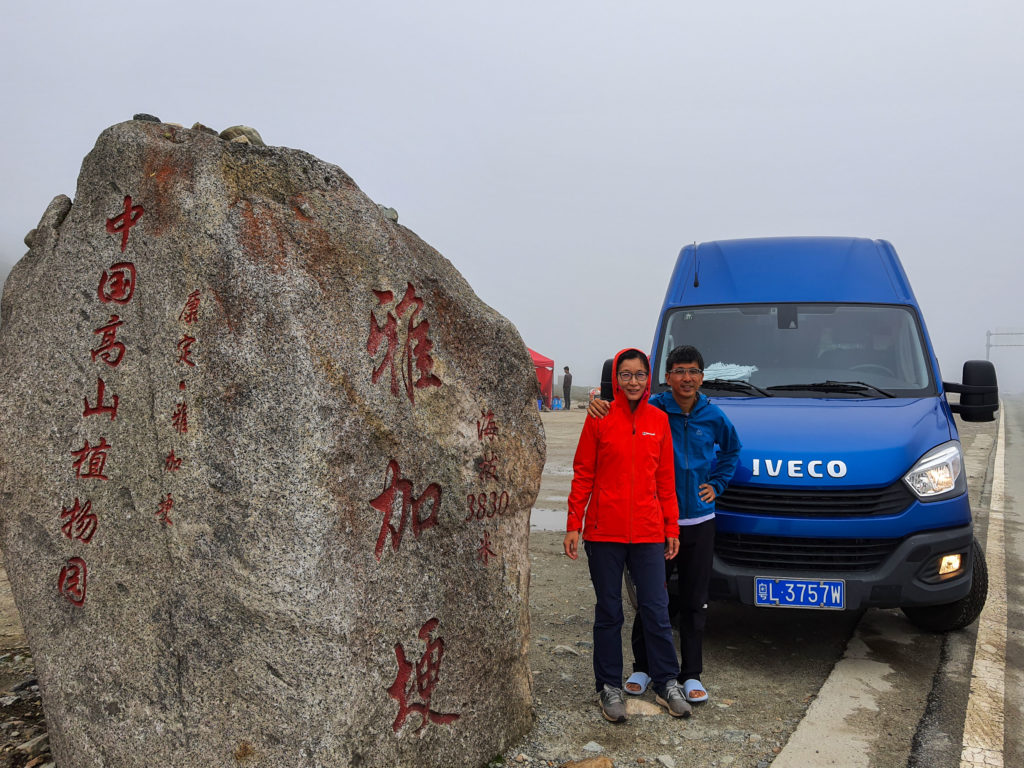
After seemingly endless bends and turns and going up and down, we drove through the Zheduo Mountain Pass(折多山) at 4298m. I started feeling strange and had to force myself to take deep breath as we neared Zheduo Mountain Pass. I was desperate for a pee by the time we reached the viewpoint. I walked into the building where the toilet was and my heart sank instantly as it was located at the very bottom. Just when I thought that I had caught my breath back from climbing up all the stairs after the toilet business, my heart sank yet again when I saw even more stairs that I had to climb to reach the point to get the supposedly best view which by now was hidden in fog.
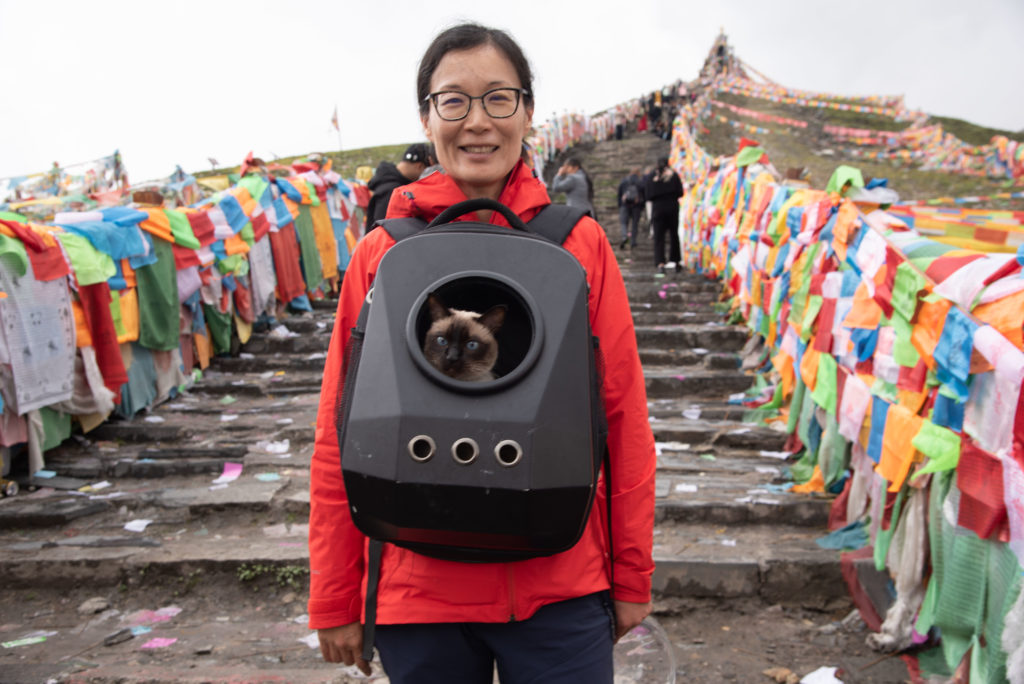
It got very windy and started to drizzle when we got to the viewpoint. You can imagine how relieved I was when I got back into our van just before it started pouring down. We felt pretty cozy inside our van and had a simple lunch of fruit and cakes with hot tea. Daisy emerged from her own little sofa and started meowing – her way of asking when we would arrive.
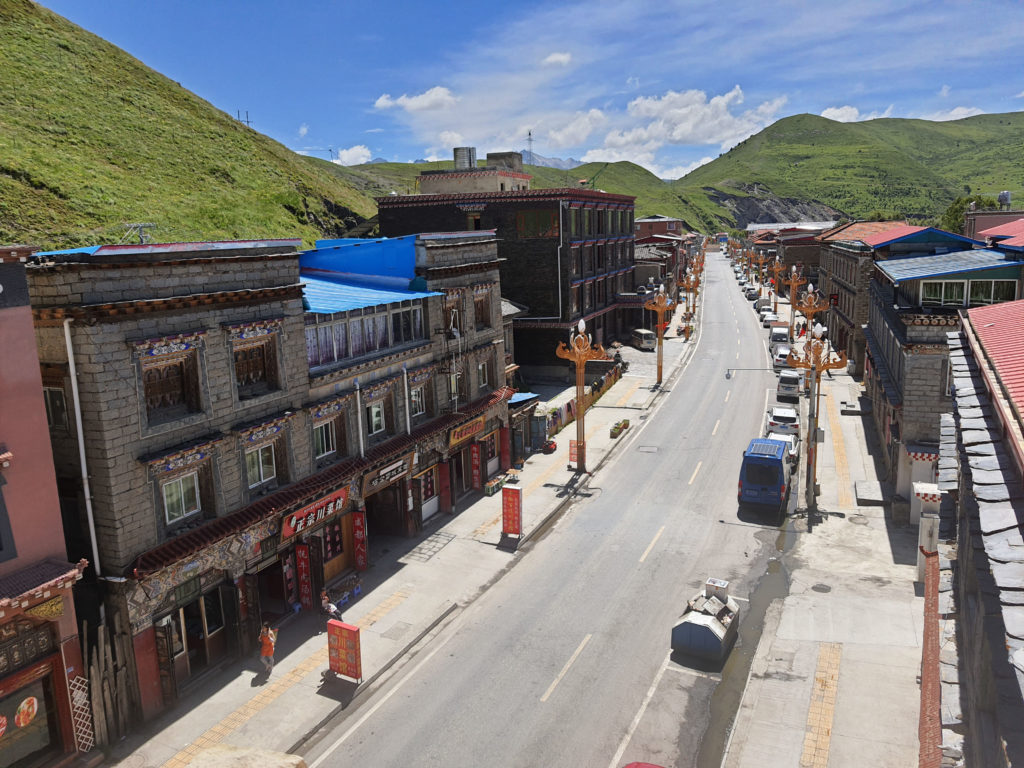
We arrived at Ta Gong in late afternoon and checked into a Tibetan guesthouse in the middle of the town. A rather shy Tibetan woman at the front desk greeted me. But she was certainly capable and strong as she swiftly helped us carry our suitcases to the top floor while I slowly negotiated the stairs. She is the wife of the owner and also the chef.

We went to bed just after nine and woke up a few times during the night. I prematurely thought that I was doing ok with the high altitude but only later I realized that the reaction usually kicks in on the second day. We were woken up by many black birds chirping on the rooftop and found Daisy all excited and keeping a close watch by the huge window behind our bed. Lavender on the contrary was silent as I suspected that she was nervous of the presence of the wild birds.

We had a leisurely walk around town and I reminded Kin that I would not venture any slopes as I could feel that my high altitude reactions are playing up slowly. But it was inevitable and by the afternoon, I was half paralyzed and had to retreat back to our room. I forced myself to eat dinner and fortunately I had a good night sleep and felt better the next day. Kin, on the whole did much better than I apart from the occasional headache after climbing the stairs with luggage. As we were adapting to the high altitude, not only did we consciously cut down most physical activities, we also just had one shower during our four-day stay in Ta Gong to make sure that we would not catch a cold.

We met a man at breakfast the next day and he started talking about the car trouble he had the night before. As it was getting dark, he drove fast and made the mistake of racing over some potholes, which he didn’t see. One of the tyres exploded soon after and he and his family were stranded about 10 kilometres from the town. Luckily he knows the guesthouse owner, Sang Ji Jia (桑吉甲) who called someone to toll his car and took his family to the guesthouse. Mr Sang (Tibetans do not have surnames but I will call him Mr. Sang to make things simpler) said that he will take all of us to sightseeing in the afternoon after the car was repaired. Kin and I secretly thought that it would be a miracle if he could get the new tyres delivered in the next three days. Amazingly the new tyres arrived that afternoon and his car was swiftly fixed. So off we went with Mr. Sang as planned.
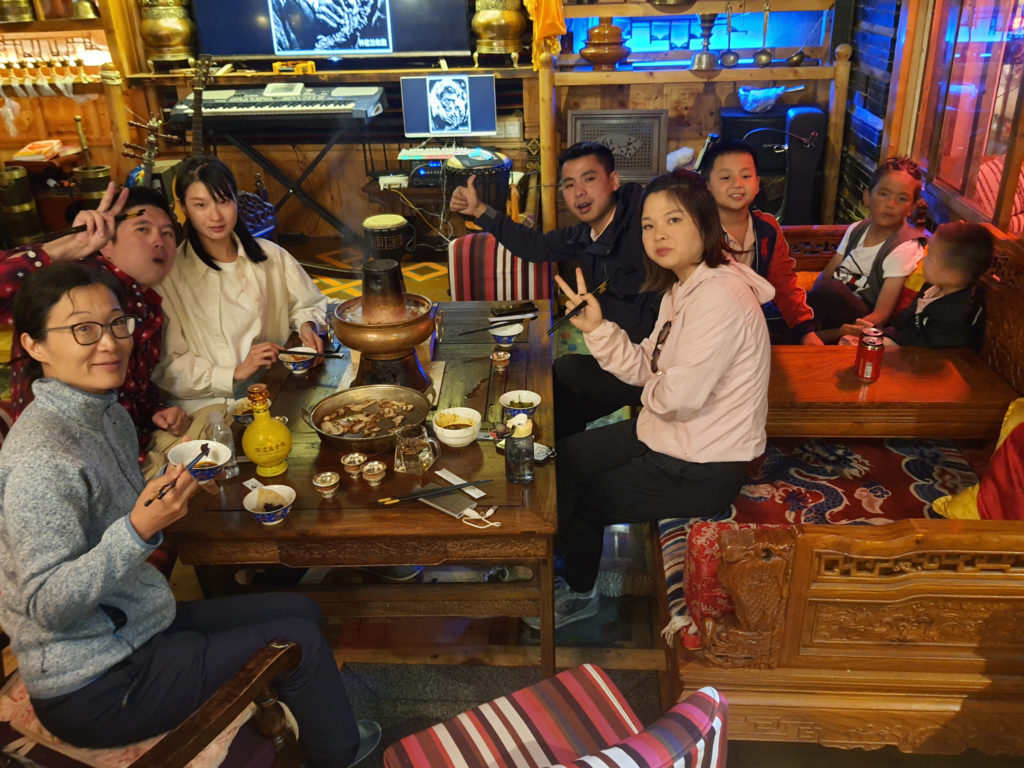
You may wonder why I mentioned this incident that seems to have no relevance. Well, as we walked out of the guesthouse to get our van, I could not believe my eyes as I saw a dark blue Rolls Royce parked right in front of the guesthouse. So that was the car that our new friend was driving! As we followed the flashy car along the narrow dirt road amidst all the dust, gravel and meadows, I kept thinking that we were taking part in a deadpan comedy movie. It was simply unreal and crazy!

Later we found out that our new friend is in second-hand car business. He just bought the Rolls Royce (which costs RMB 2 million) and he decided to make a family trip out of it as he needed to bring the car back to Hangzhou (杭州) from Chongqing (重慶) which is in the eastern part of Sichuan. There is definitely a moral to this little anecdote – that one should never buy a second-hand car, especially not a second-hand Rolls Royce, as one never knows what has happened to it in its previous life.

Mr. Sang took us to a lovely Tibetan house called Khampa Ecolodge in the middle of the meadow about five kilometres away from the main road. It has the perfect view of the Yala Snow Mountain (雅拉雪山) and it is run by an American woman, Angela from Colorado who married a local Tibetan. We had coffee and tea while gazing at the beautiful snow mountain. Kin and I hope that we could come back one day and spend a few days at the lodge and do some hiking in the area.
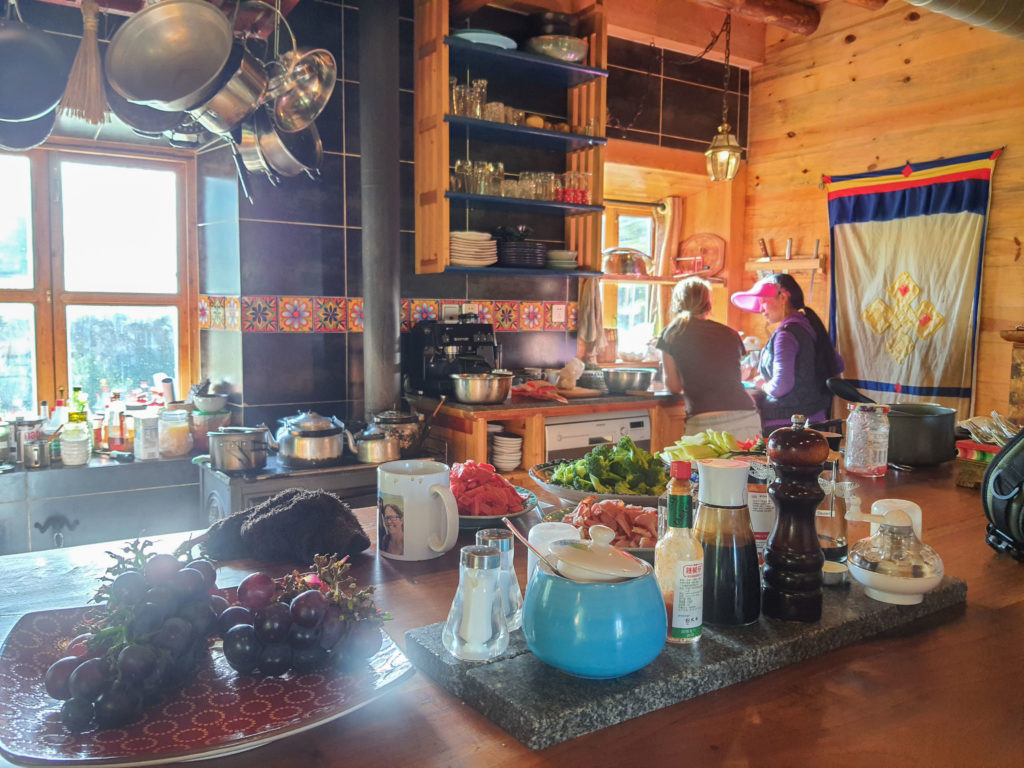
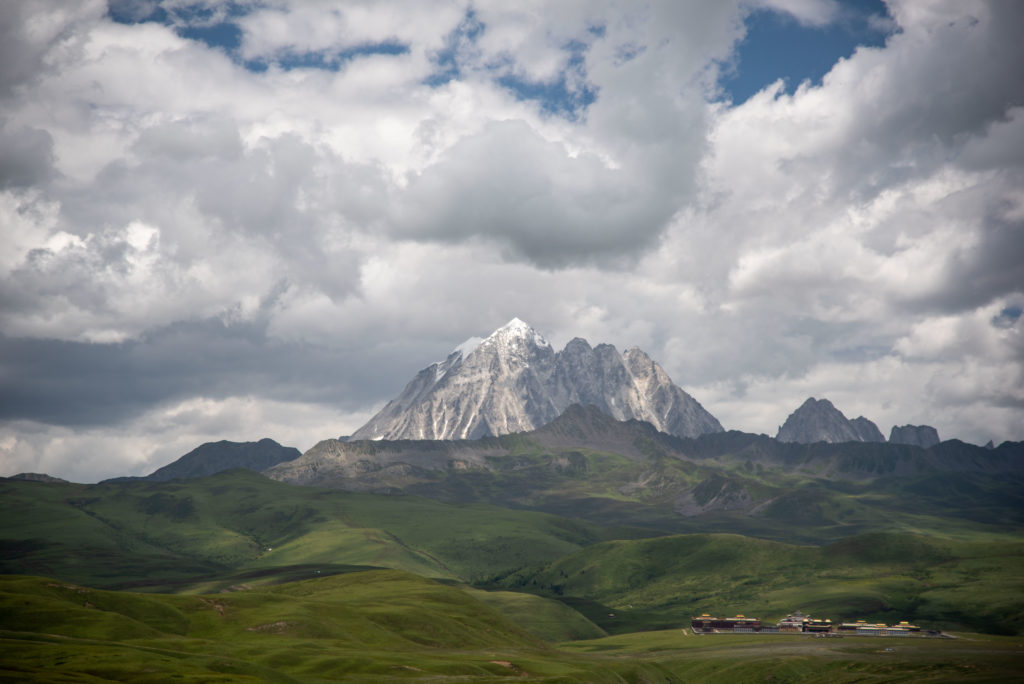
Then we went to the Mu Ya Temple (木雅大寺) which is by far the grandest temple we have ever seen. I felt as if I had stepped into a holy palace and the fact that we were the only visitors made it even more special. Mr. Sang told us that his eldest son is studying there and only then we realized that his son is the chosen living Buddha and has left the family at the age of six. It is the highest honour for the family but it is also a “huge commitment” as it means that he is no longer his son and has devoted to a life that will be completely detached from his family. It was such a surreal and overwhelming day for me with the Rolls Royce, the magnificent Mu Ya Temple and living Buddha merging with the lingering high altitude reaction.


The next day, Mr. Sang suggested us to visit a small temple nearby to see the annual festivity. The temple was not even on the GPS and we could only find it thanks to Mr. Sang’s information. When we got near the temple, a group of locals and monks suddenly appeared out of nowhere and asked what we were doing. We hesitantly told them that Mr. Sang told us to come and his father and children already arrived. At once, you could see that they let their guard down and smiled. Now, we realized that Mr. Sang’s family is pretty well known in the area.
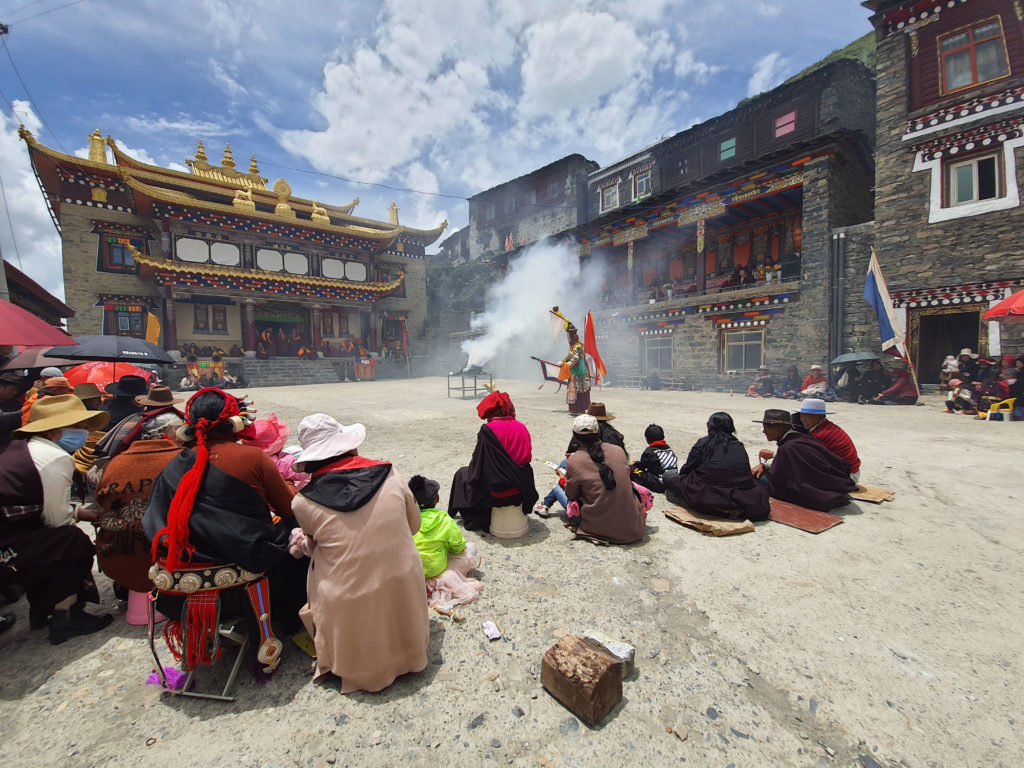
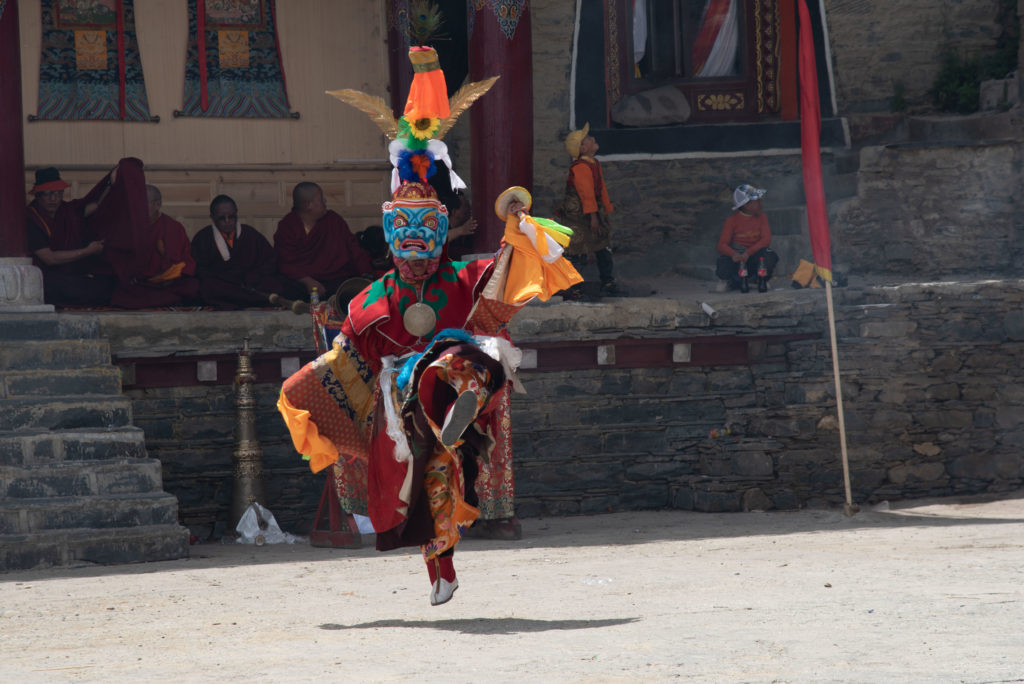
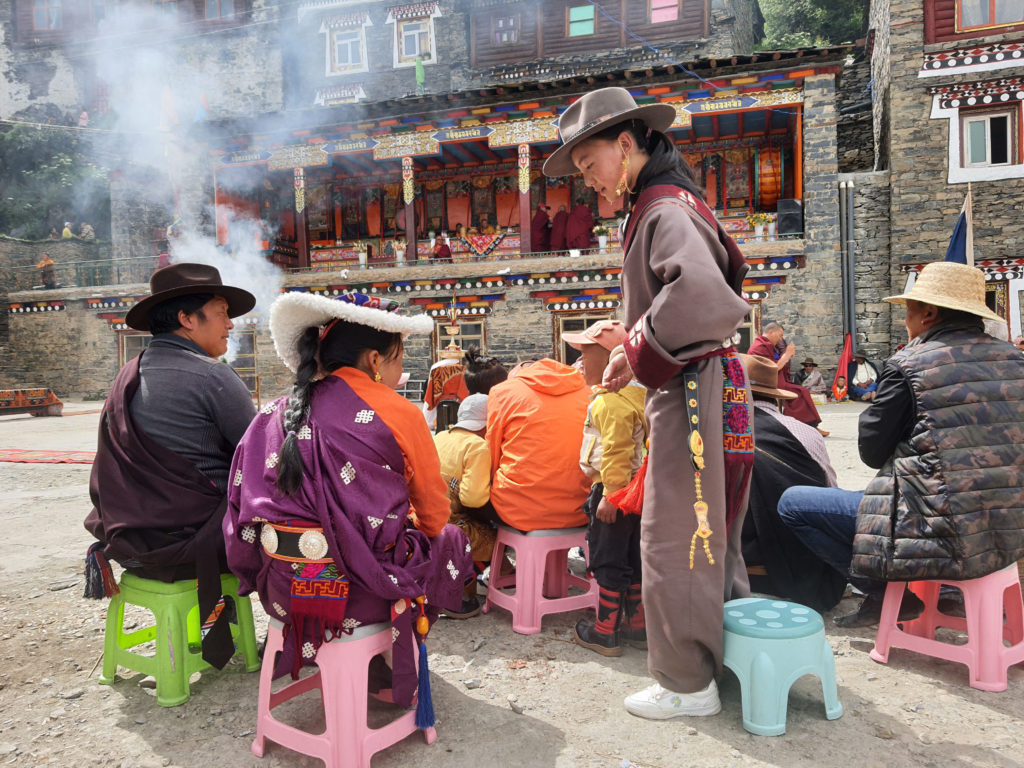
We were the only two outsiders mingling among the locals at the festivity. It was the first day of a three-day event and each day consisted of a series of dancing rituals. Each dance sequence involved one or two persons wearing fanciful costumes and masks. We could not understand the stories behind but we assumed that all the ritual dance aimed to disperse the evil spirit and bring good health and fortune to the villagers.
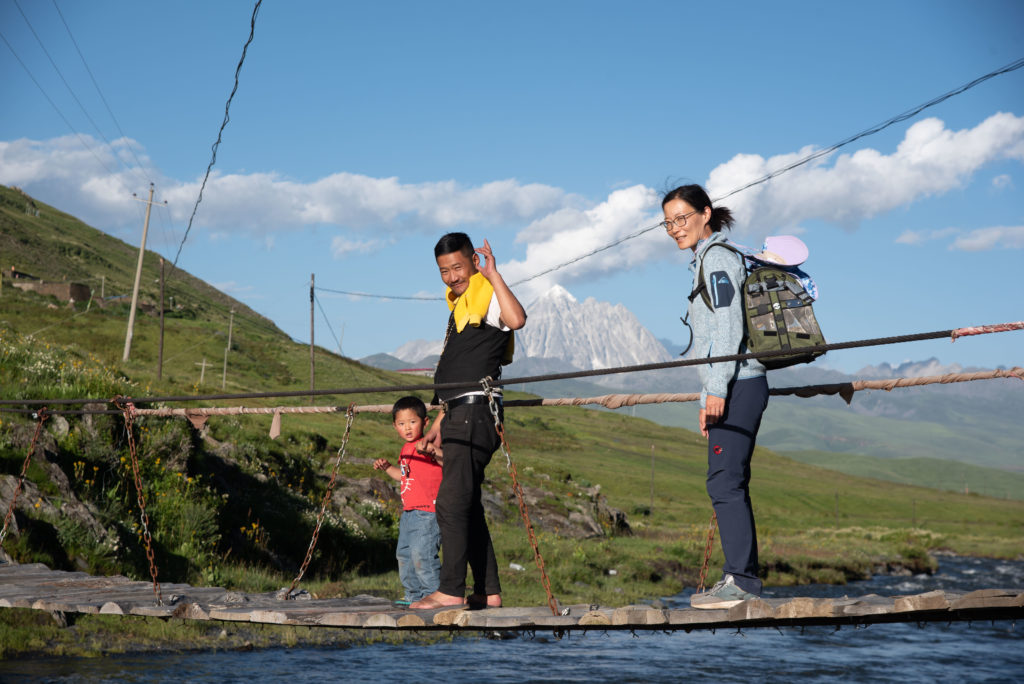
If we did not meet Mr. Sang’s family, Ta Kung would not have made much impression on us apart from the overpowering high altitude reaction I experienced. He is warm and took time to show us the hidden gems of his hometown. And we simply have fallen in love with his children.

Mr. Sang’s eight-year-old daughter Zhaxi Nyima (扎西尼瑪) looks rather boyish with a slightly serious voice. She always looks after her little brother and she also looked after Lavender our lovebird whenever we took her out as the local children were so fascinated by her and hovered around her all the time. She has an earnest air about her even when she is playing with other kids.

We asked her if she wanted to join us after the festivity to go to the Ecolodge. She immediately said yes and we made sure that she told her grandfather before we left. We had burger and steak at the Ecolodge and Kin taught her how to use the cutlery. She is smart and very conscientious in following every step Kin said. Just when we finished the main course, she suddenly stood up and put Lavender’s backpack on her back as she thought that it was time to leave. I found it rather endearing the way she cared about Lavender by making sure that we would not leave her behind. We had bread pudding with yak’s cream for dessert and she kept mumbling how tasty it was.
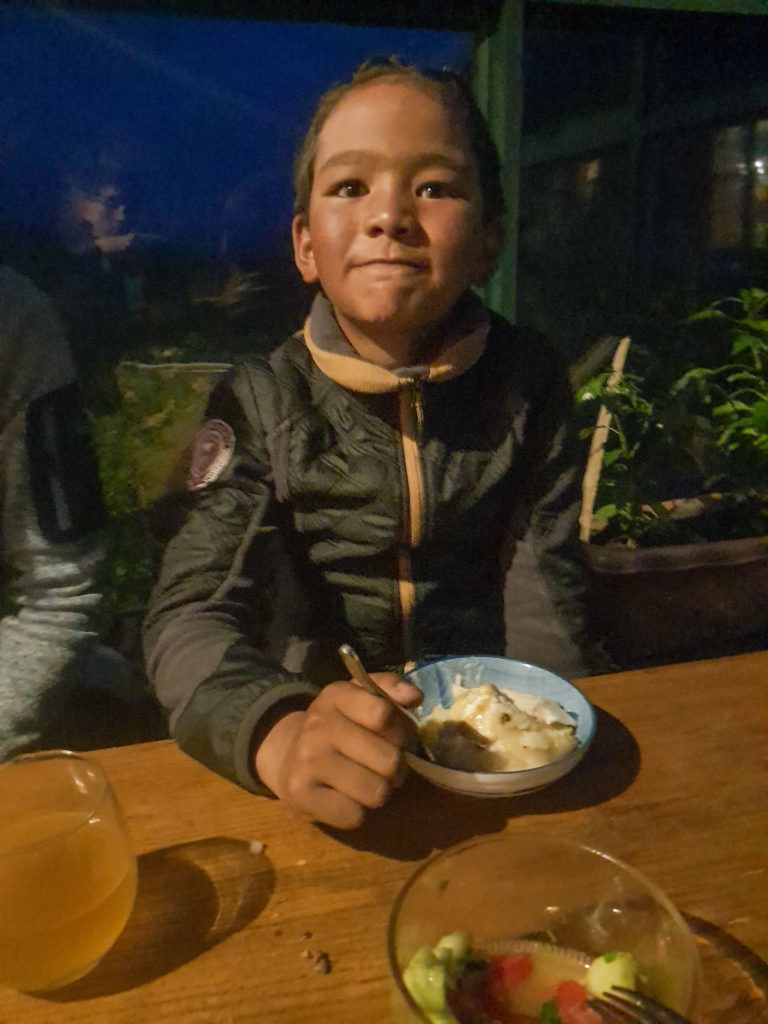
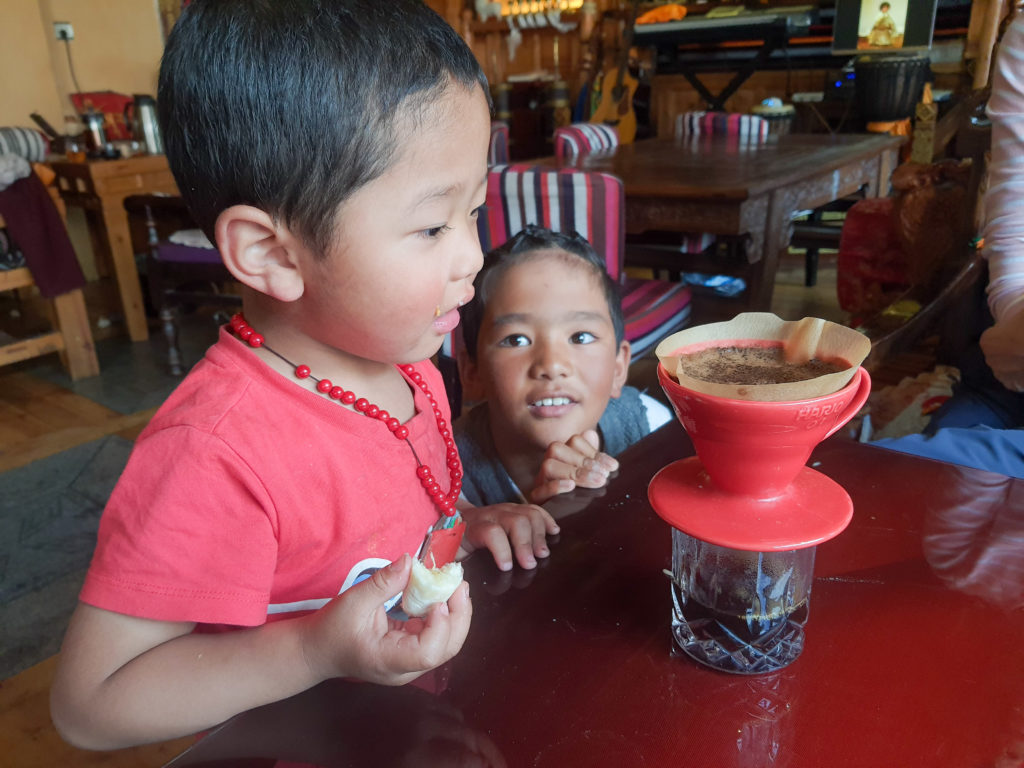
The youngest son is three years old and he speaks a little Putonghua. I was constantly amused by his cheeky and sometimes mischievous behaviour. One time, he saw me feeding Lavender some chopped fruit and he came over directly and took my half banana on the table and threw it at the cage. It took me by surprise but at the same time it was such an instinctive action that both Kin and I could not help laughing. Another time, I left our luggage and a bag of food on the stairs before going to breakfast. He took the chocolate from the bag and came over to ask me what it was. When I tried to teach him repeatedly that he should ask me if he could have some, he kept saying, “yes, can eat” and beamed at us. I think no one has ever taught him the concept of asking for permission, so he just could not grasp what I was trying to tell him. But he was very gentle and did not nag or cry when he did not get his way.
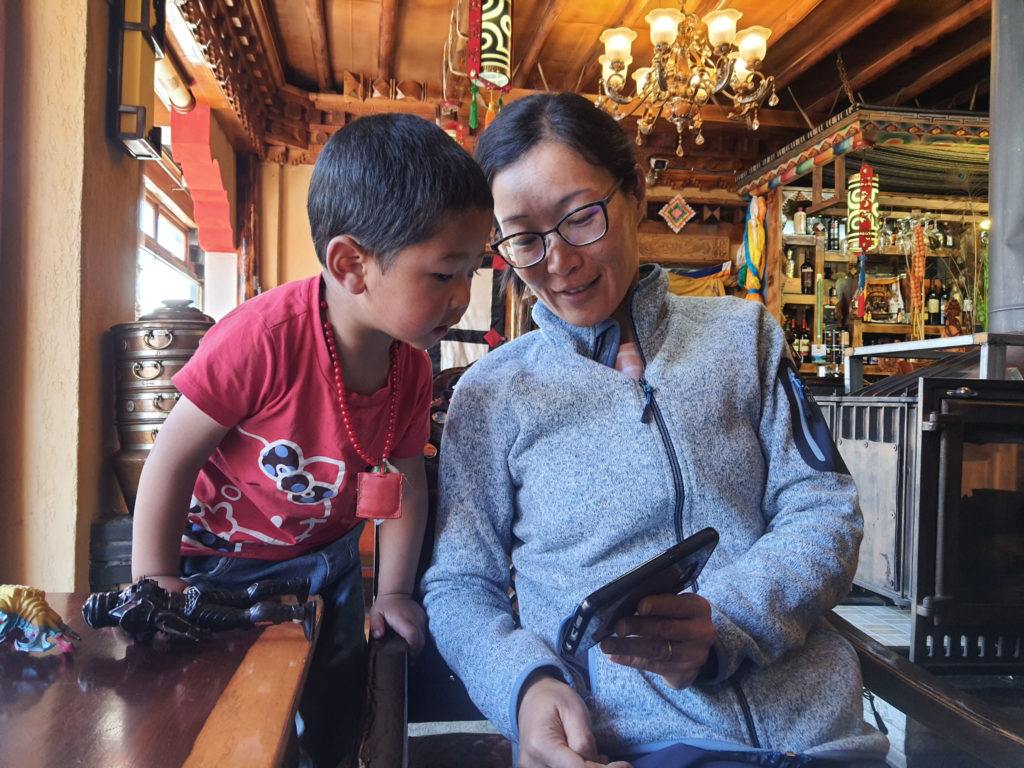
It is both their directness and gentle nature that made us really drawn to Mr. Sang’s children. We had such a lovely time with the whole family that we wished we could stay longer. But at the snail speed we are travelling, we would never get to Tibet. We only saw the youngest son the morning we left as his sister was still sleeping. Mrs Sang told us that her daughter had so much fun with us and was exhausted by all the excitement. We hope that we could come back and spent time with the family again.
Accommodation: 康定阿克卓巴精品民宿, 康定市塔公镇塔公村文诚路80号
